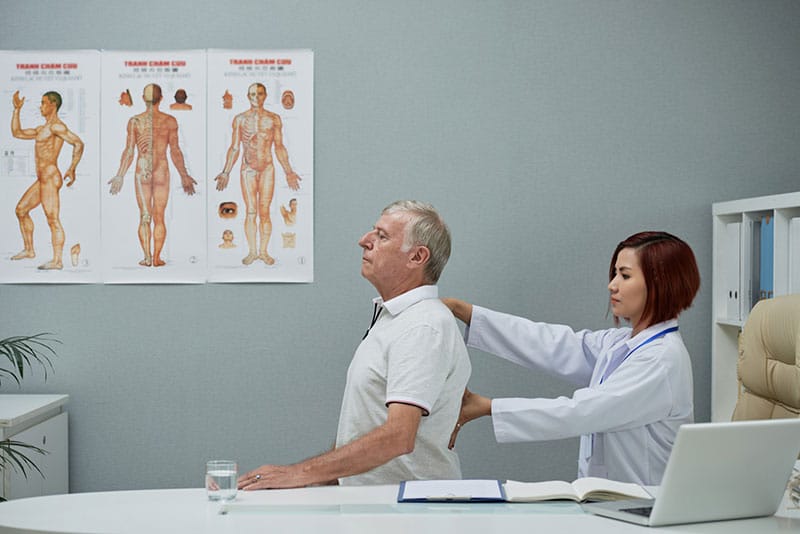Proper chiropractic documentation is necessary for the safety and continuity of patient care. Documentation should be accurate, legible and understandable, and include sufficient details so that other practitioners down the line can provide the needed care for the patient. Good clinical records are necessary to avoid auditor scrutiny, a commonly reported problem in chiropractic practice. Adequate clinical records can also assist in any enquiry or malpractice matters. Importantly, as any chiropractic billing service provider will tell you, proper documentation is necessary to maximize reimbursement. Inadequate documentation can lead to claim denial.
All ICD-10 codes and CPT codes must be validated in documentation and synchronized with the diagnoses and treatment code descriptors. The key elements of chiropractic documentation to optimize reimbursement are as follows:
-
- Ensure Appropriate Documentation With CPT Codes: Chiropractors need to ensure that they are using the right codes to report their services. The four billing codes for chiropractic manipulative treatment that indicate the procedures that provider performs that has to be reimbursed are:98940 Chiropractic manipulative treatment (CMT); Spinal, 1-2 regions
98941 Chiropractic manipulative treatment (CMT); Spinal, 3-4 regions98942 Chiropractic manipulative treatment (CMT); Spinal, 5 regions98943 Chiropractic manipulative treatment (CMT); Extraspinal, 1 or more regionsThe accompanying documentation should support the CPT code billed for a certain level of service. If the documentation does not accurately reference the number of spinal regions treated per code, this can invite payer scrutiny and affect reimbursement. For instance, when billing CPT code 98942, the documentation should reference 5 spinal regions with dysfunction or misalignment. United Healthcare (MA) states: “The precise level(s) of the subluxation(s) must be specified by the chiropractor to substantiate a claim for manipulation of each spinal region(s). The need for an extensive, prolonged course of treatment should be appropriate to the reported procedure code(s) and must be documented clearly in the medical record”.
- Use Valid ICD-10 Codes: Using valid ICD-10 codes that support the medical necessity of the service can enable authorization and reimbursement. The diagnosis should be subluxation, which may manifest as acute (strains and sprains), chronic (loss of joint mobility) or nerve root problems (e.g. pinched nerve). An x-ray or physical exam can be used to demonstrate subluxation. The chiropractic local coverage determinations (LCDs) for Medicare Administrative Contractors (MACs) include information for ICD-10 codes that support the medical necessity for chiropractor. The codes must support neuromusculoskeletal (NMS) conditions, and denote the body regions requiring treatment.
- Ensure Appropriate Documentation With CPT Codes: Chiropractors need to ensure that they are using the right codes to report their services. The four billing codes for chiropractic manipulative treatment that indicate the procedures that provider performs that has to be reimbursed are:98940 Chiropractic manipulative treatment (CMT); Spinal, 1-2 regions
-
- Stay Up-To-Date With Coding Changes: CPT, HCPCS and ICD codes change every year and practitioners need to stay abreast with the updates and use the most current version of the codes. For instance, new Evaluation & Management (E/M) codes came into effect on January 1, 2021 that specifically impact coding for office and outpatient visits (99201-99215). The appropriate level of E&M is determined based on Medical Decision Making (MDM) or Time. While history and physical examination need to be documented, they are no longer the elements for choosing the appropriate level of care. Knowing the latest codes and guidelines when using Time and MDM for reporting E/M services, and ensuring accurate documentation is critical for proper reimbursement.
-
- Correctly Document The Initial Visit And Subsequent Visits: At the initial visit, clearly document history, description of the present illness, and evaluation of musculoskeletal/nervous system via physical examination or x-ray, diagnosis, and treatment plan. For subsequent visits, document treatment provided on the day of the visit in addition to history and physical exam. The primary and secondary diagnosis codes for each level billed must be reflected in the documentation. The diagnosis primarily responsible for the treatment should be listed first on the claim form, and the additional conditions/regions that are being treated can be reported on the subsequent positions.
- Report Modifiers Correctly: Codes 98940, 98941 and 98942 should be used with the correct modifiers based on the patient’s condition: AT – acute treatment; GA- to indicate that the patient is aware that the services do not meet the plan’s guidelines for coverage, has signed a waiver indicating that he or she will be personally responsible for the denied charges; GZ – item or service expected to be denied as not reasonable and necessary Item or service expected to be denied as not reasonable and necessary (no signed ABN on file). If the correct modifier is not reported or if the modifier is reported incorrectly, payment will be denied. For Medicare purposes, the AT modifier must be placed on a claim when providing active/corrective treatment to treat acute or chronic subluxation. A Chiropractic Economics report points out that billing Medicare with the AT modifier without including the required medical necessary elements in the documentation is an “example of waste and abuse”.
The Health and Human Services’ Office of Inspector General (OIG) has reported that up to 94 percent of chiropractic records are missing, or do not properly reflect key elements such as evaluation, a treatment plan, medical necessity and/or contraindications to treatment. In most cases, errors in documentation occur inadvertently, but as far as an insurer or auditor is concerned, if it wasn’t documented, it wasn’t done.
Chiropractic medical billing and coding companies translate the medical documentation into billable codes that capture the services rendered. As codes are assigned based on the documentation in the patient’s medical record, it is up to the chiropractor to ensure relevant accurate and legible documentation. Documentation must ascertain the necessity of each visit. Experienced medical coders will query providers to clarify clinical documentation and ensure the most accurate codes are reported on a claim to maximize reimbursement and avoid errors that can cost a practice thousands of dollars in unclean claims and repayments.




